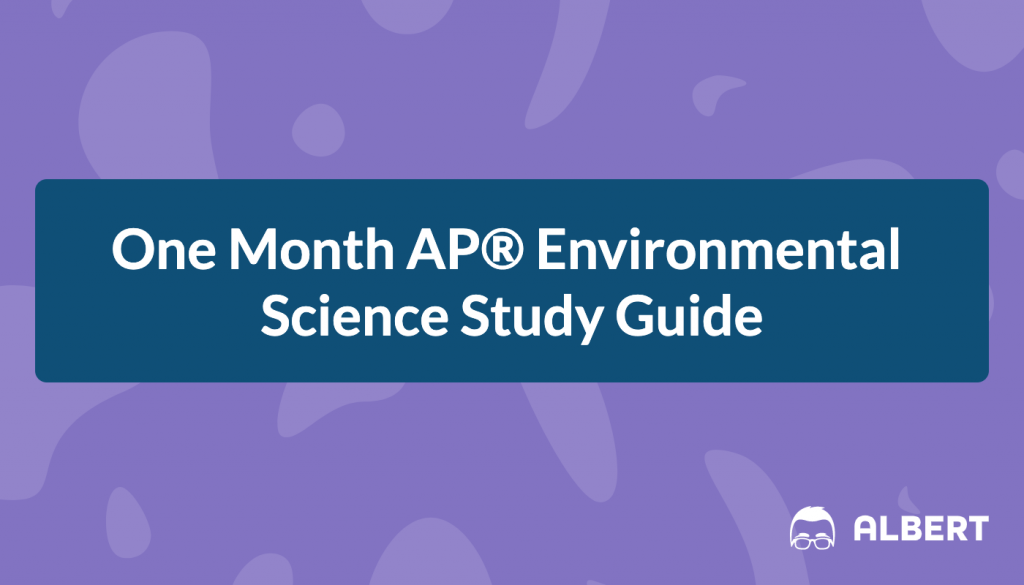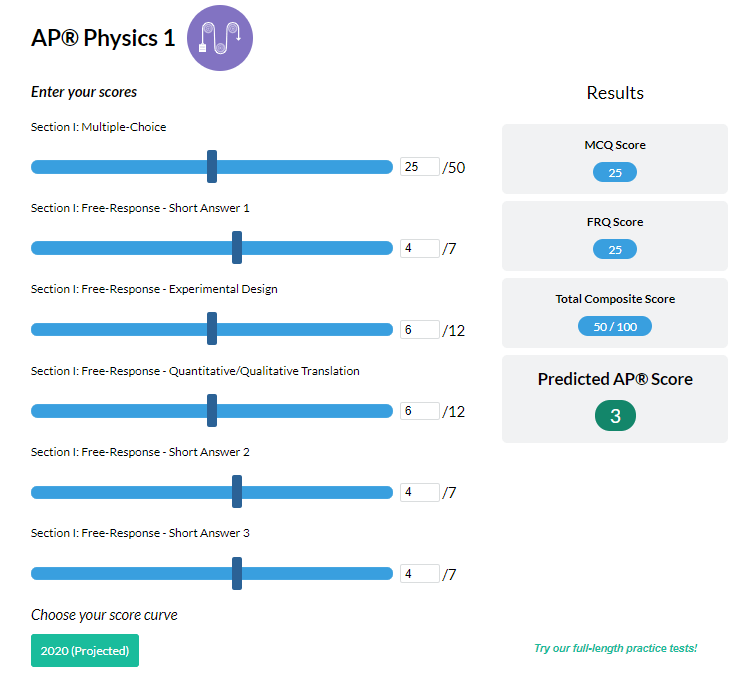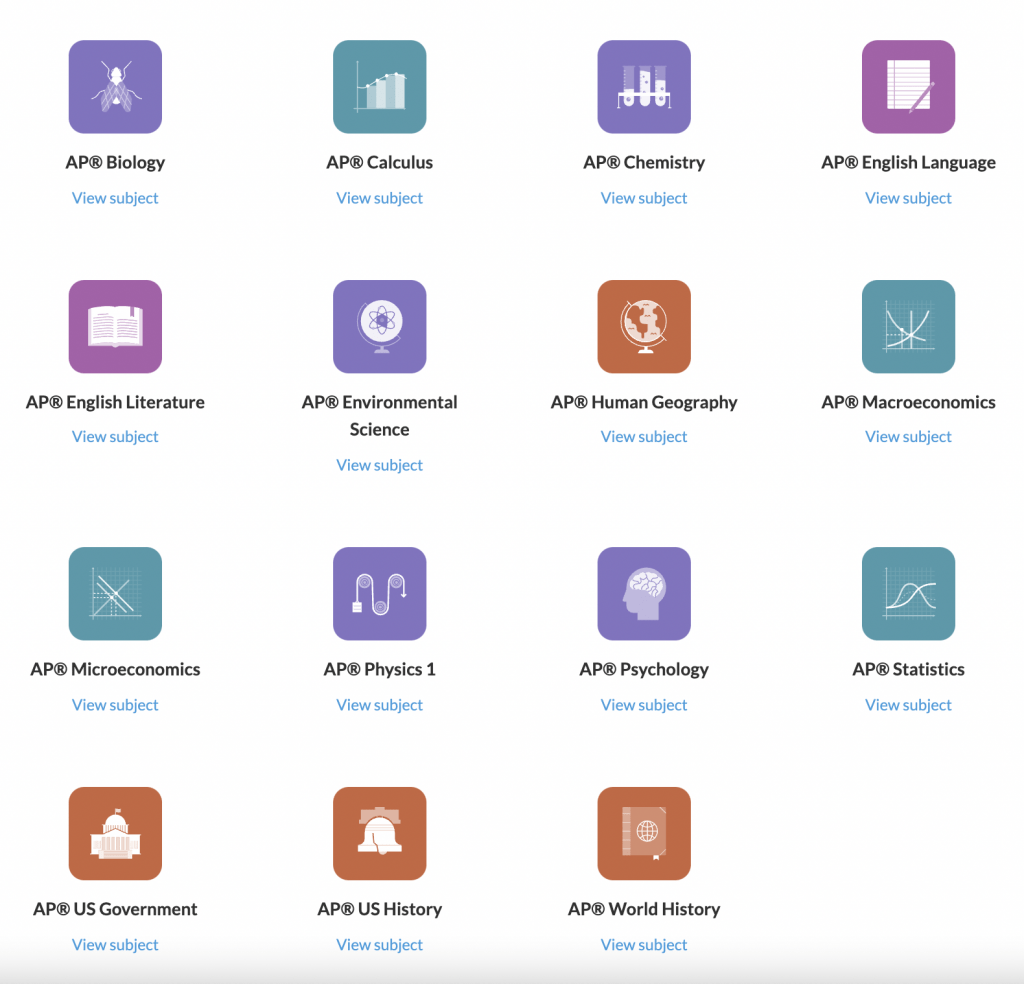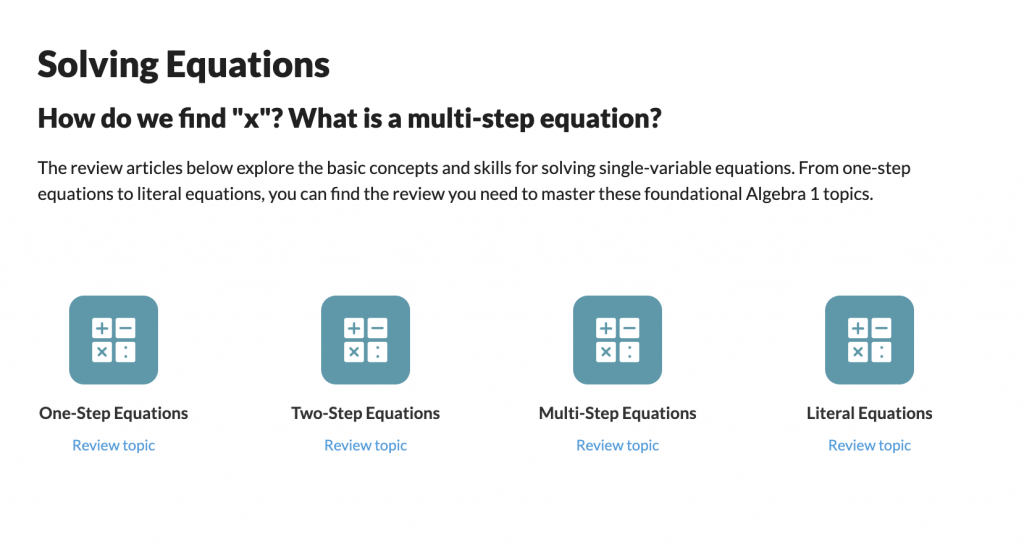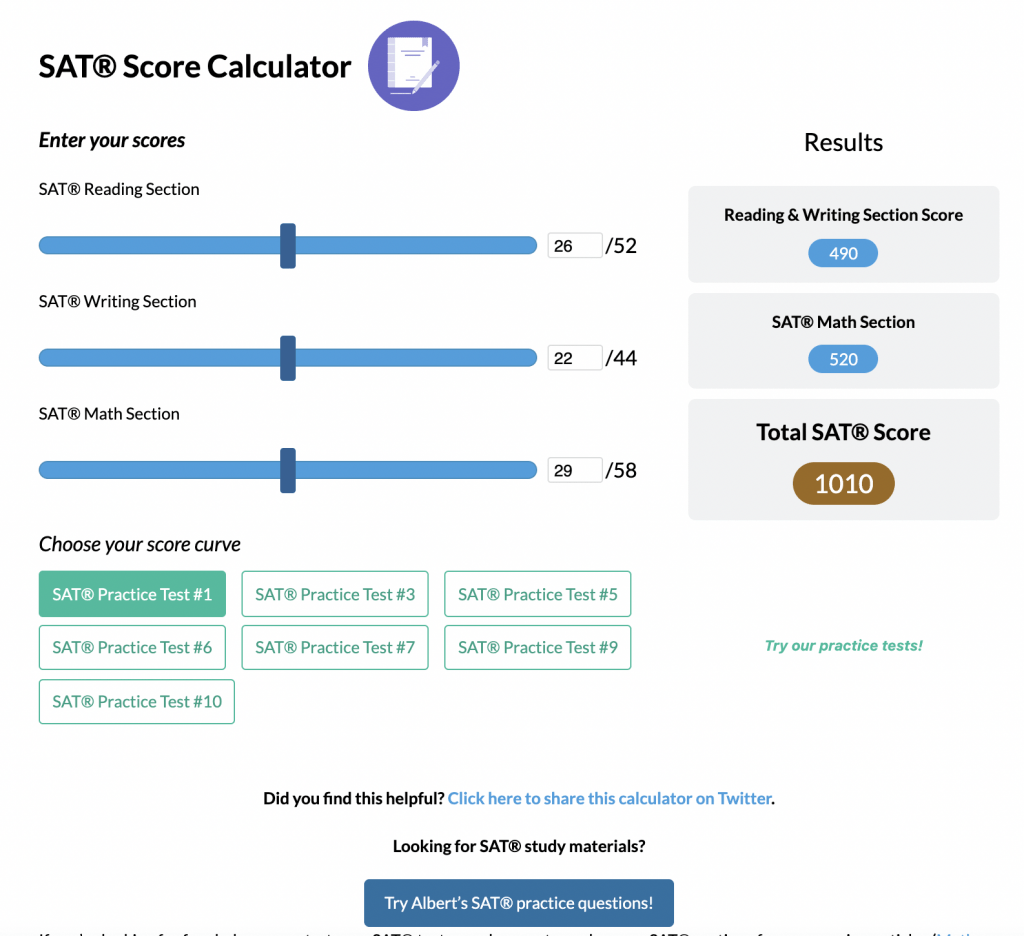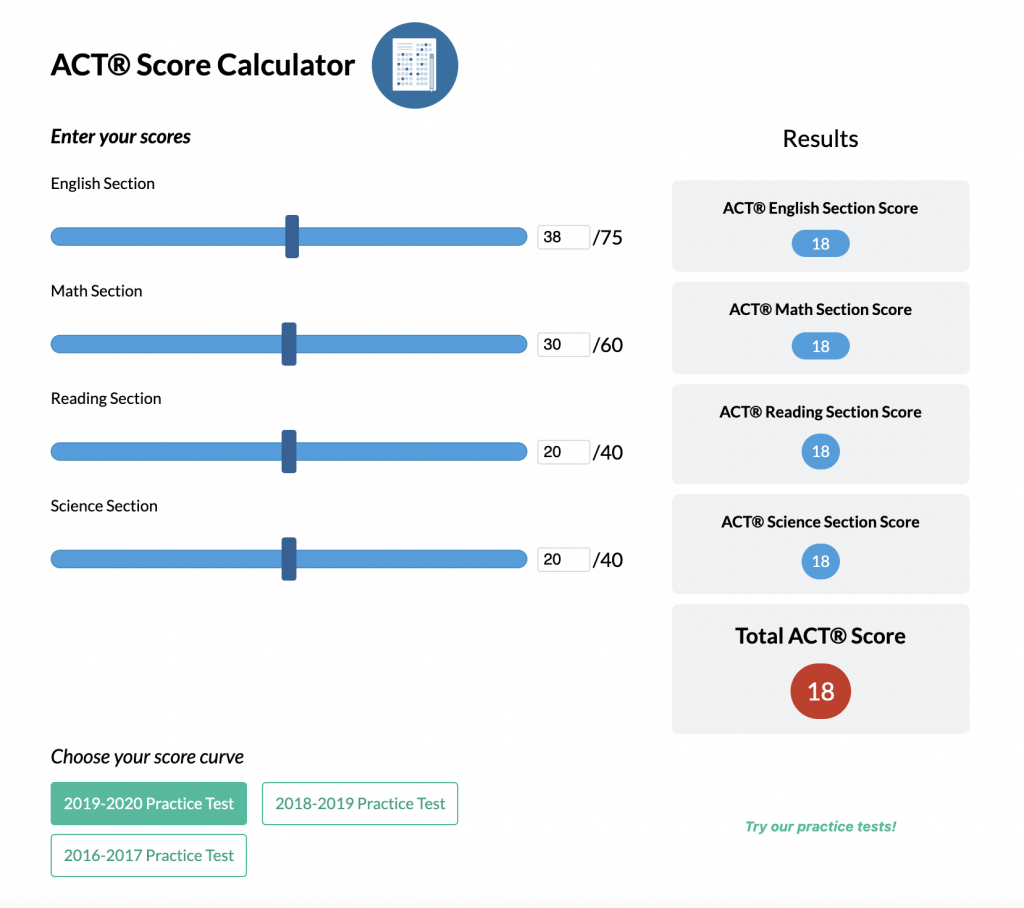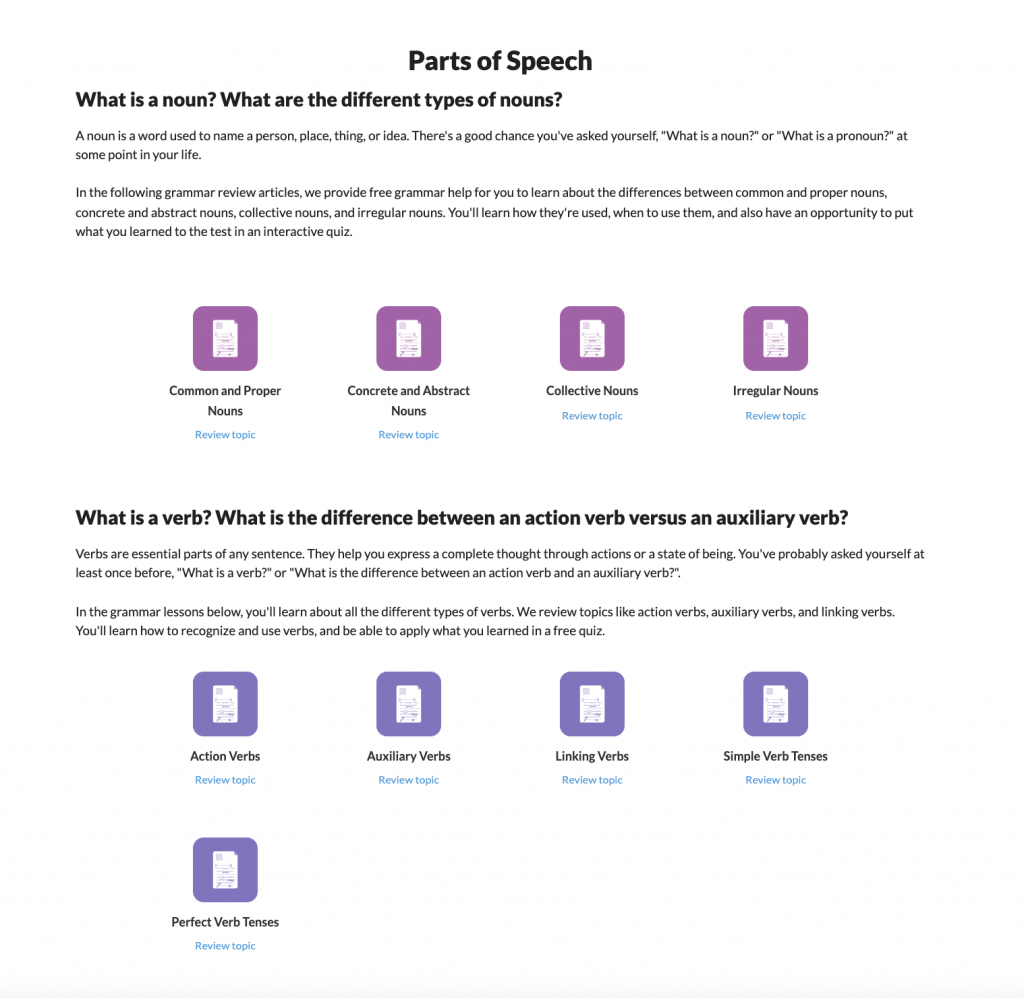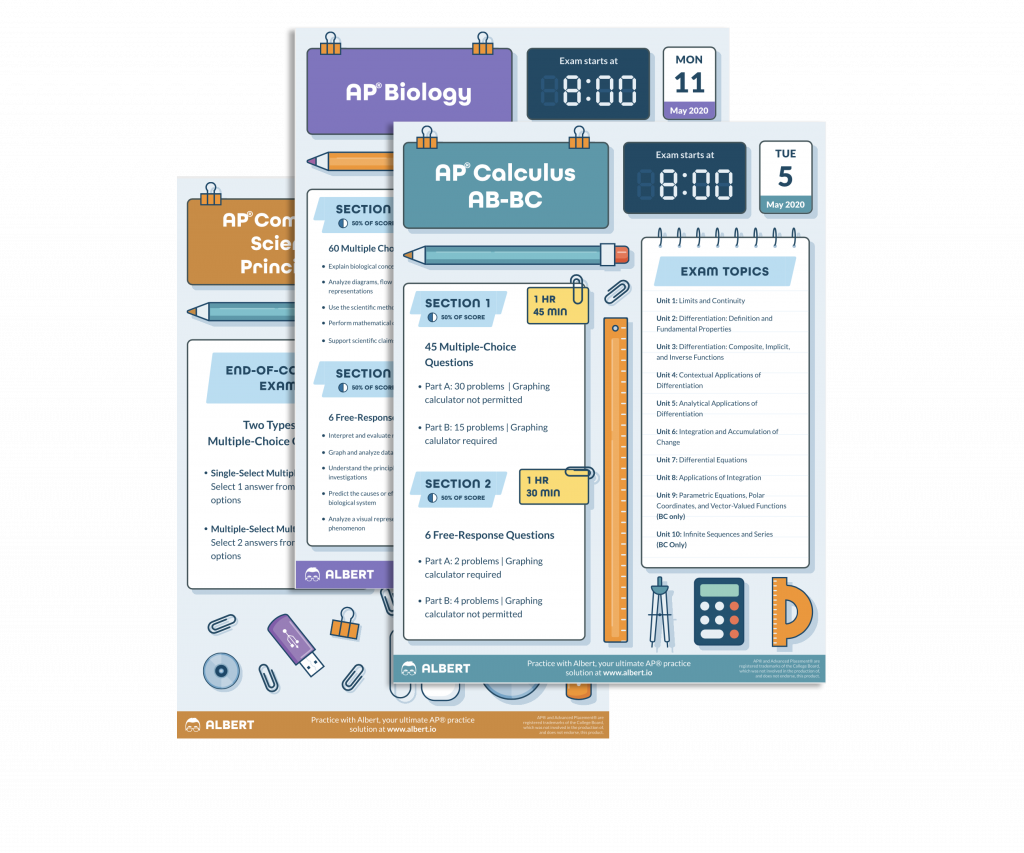It’s that time of year. You’re probably starting to feel the pressure of your upcoming AP® exams. Don’t worry, we are here to help. We have created this 30-day study routine so you don’t have to worry too much about where to focus your time and energy. The AP® Environmental Science exam will be no walk in the park, but let us guide you through your studying.
This AP® study guide is designed to give you everything you need to review, learn, and maintain for the AP® Environmental Science Exam. Only you can earn that 5, but if you stick to the daily routine we have set up for you, we can help to get you that much closer.
Key Things to Remember While Using this AP® Study Guide
– From The College Board: “The AP® Environmental Science course is designed to be the equivalent of a one-semester, introductory college course in environmental science, through which students engage with the scientific principles, concepts, and methodologies required to understand the interrelationships of the natural world. The course requires that students identify and analyze natural and human-made environmental problems, evaluate the relative risks associated with these problems, and examine alternative solutions for resolving or preventing them. Environmental Science is interdisciplinary, embracing topics from geology, biology, environmental studies, environmental science, chemistry, and geography.”
– The exam itself consists of 100 multiple choice questions, for which you have 90 minutes to complete. This will make up 60 percent of your exam score. There will also be a longer response question that relates to Data Sets, one Document-Based Questions, and 2 Synthesis and Evaluation Questions that will make up the Free Response section of the exam. These questions must be completed within 90 minutes and account for 40 percent of your overall score.
– Remember, this is just a guide! Not every study plan can be a perfect fit for every student out there. If you find yourself getting stuck on certain recommendations, or certain activities just aren’t clicking, feel free to move things around. Make this plan work for you! We want you to succeed and get that 5 too.
– Also, you are going to want to keep on top of your work, but try to make this AP® study guide as enjoyable as possible. If you find yourself dragging a little, go outside and do something else for a few minutes so you can recharge.
– On that note, stay healthy! Eating well and getting plenty of rest are absolutely essential to successfully keeping the mind in shape. If you ever feel yourself getting tired following this study plan, get up and do a couple of quick stretches, or go for a short walk. Your brain will appreciate the extra blood flow.
What You Will Need

– Access to Albert.io’s AP® Environmental Science homepage. This is going to be your guidebook for the AP® Environmental Science exam, so get to know it and get to know it well!
– A flashcard site such as Quizlet. Or you can just use regular notecards. Whichever version you like better. You can also access this site on your phone, so you can carry your notecards with you at any time.
– Note-taking materials. These can be done on your computer, tablet, etc. or you can use a physical notepad and pen. You will be taking notes daily, so make sure you are comfortable with whichever you choose.
– The CollegeBoard homepage for AP® Environmental Studies. It’s always a good idea to read through this a couple of times, so you fully understand what the College Board’s expectations are.
– Access to Bozeman Science’s Environmental Studies YouTube Playlist page. We will be turning to this quite a bit, so you might as well bookmark it now in your browser.
– Your own AP® Environmental Studies Textbook or an online source of equal quality. When studying for the AP® exams, the more the better, so get your hands on whatever you can.
Optional (but helpful) Stuff:
– Any AP-style workbooks or study guides your teacher provides, or any supplemental material you find helps your study of the main materials. It never hurts to pad your options for learning and practicing the material!
– Here are some excellent recommendations on the best review books out there and other great recommendations. Take a look at everything the site has to offer and make your own decisions on what will work best for you.
– A dictionary, be it print or online. Mixing science and humanities terms can get confusing, so use this to clarify anything concept you are not fully grasping.
How to Use the Study Plan
– We have designed this AP® study guide to revolve around the specific expectations laid out by the College Board for the topic of Environmental Science. The College Board has laid out 7 key themes that you will need to understand before taking the exam:
– Earth Systems and Resources
– The Living World
– Population
– Land and Water Use
– Energy Resources and Consumption
– Pollution
– Global Change
– You should be spending a minimum of one to two hours studying each day. All AP® exams are known for being difficult. You will need to dedicate a serious chunk of time if you want that 5.
– But we can’t have you overload, either. It is important that you stay happy and healthy. Never overexert yourself. Keep on top of your sleep, healthy eating, and physical fitness. This will ensure that the information you are learning will be retained.
– We have also worked in a study break at the end of every study week, so you will have the chance to catch up on your rest and to take a general break from studying.
Let’s Get Started!

Day 1
– First thing’s first, we are going to start off by taking a look at the AP® Environmental Sciences course overview that the College Board has published. This will help you get to know how the AP® system works for Environmental Science.
– Read through pages 1 through 3 of the College Board’s AP® Environmental Science Course and Exam Description. Read this thoroughly and get to know how the AP® system works.
– Familiarize yourself with Albert.io’s AP® Study Guide pages, getting a feel for how our website works and where all of the information is located.
– Now, let’s get into the routine of this study plan:
For each and every day you are reading material or watching a video, you are going to want to make flashcards on all of the buzzwords you come across (either with note cards, a folded piece of paper, or online on a site such as Quizlet). Choose a term of importance, writing it down on one side of the card, while putting the definition and a helpful hint down on the other side.
For Example,
Right off the bat, you may not know what a vector function is. So, make a flashcard that looks like this:
(Side A) Vector Function
(Side B) caused or produced by humans
Helpful Hint/Example: Smog is produced by anthropogenic circumstances.
– Sometimes it helps to leave some room in the significance section, so you can add more info as you learn.
– Let’s end our first day by thinking about the main components of this course. The College Board states that all AP® Environmental Science students need to fully understand that:
– Science is a process.
– Energy conversions underlie all ecological processes.
– The Earth itself is one interconnected system.
– Humans alter natural systems.
– Environmental problems have a cultural and social context.
– Human survival depends on developing practices that will achieve sustainable systems.
– Take these six concepts and write a short paragraph on what you think this means. If you can think of real-life examples that explain your thoughts, add those in, but at this point it’s ok if your ideas are a little bare-bones. When you’ve finished, hold onto this paper, you’ll be revisiting it throughout this 30-day study guide.
– OK, now get some rest and we will begin again tomorrow!
Day 2
– It is going to be absolutely important that you take notes on the information you are gathering right not only today, but in the weeks that follow. Your notepad should become your best friend and really should never leave your side as you study with us. Make sure that you’re taking notes on key concepts, ideas that you might find confusing and need to come back to later, and tips on how to become a better studier.
– Take a look at the first video from Bozeman Science’s YouTube Don’t forget to take notes on all of the key concepts that are being covered here.
– Now let’s take a look at pages 4 through 6 of the College Board’s AP® Environmental Science Course and Exam Description.
– This is going to be a good time to get used to how the Albert.io site is set up. We just want you to select 20 questions from any category, at random. You don’t need to care about the topic or even if you get the answers correct. The point here is to just familiarize yourself with how these are phrased and the types of questions that will be asked. Don’t worry if you can’t answer them correctly yet, that time will come.
– One of the most important things to remember is that Albert.io will provide you with helpful tips and places where you can do better. Take note of your weak spots and write them down in your notebook. These are the places you will have to spend more time on as you progress forward in the days ahead.
Day 3
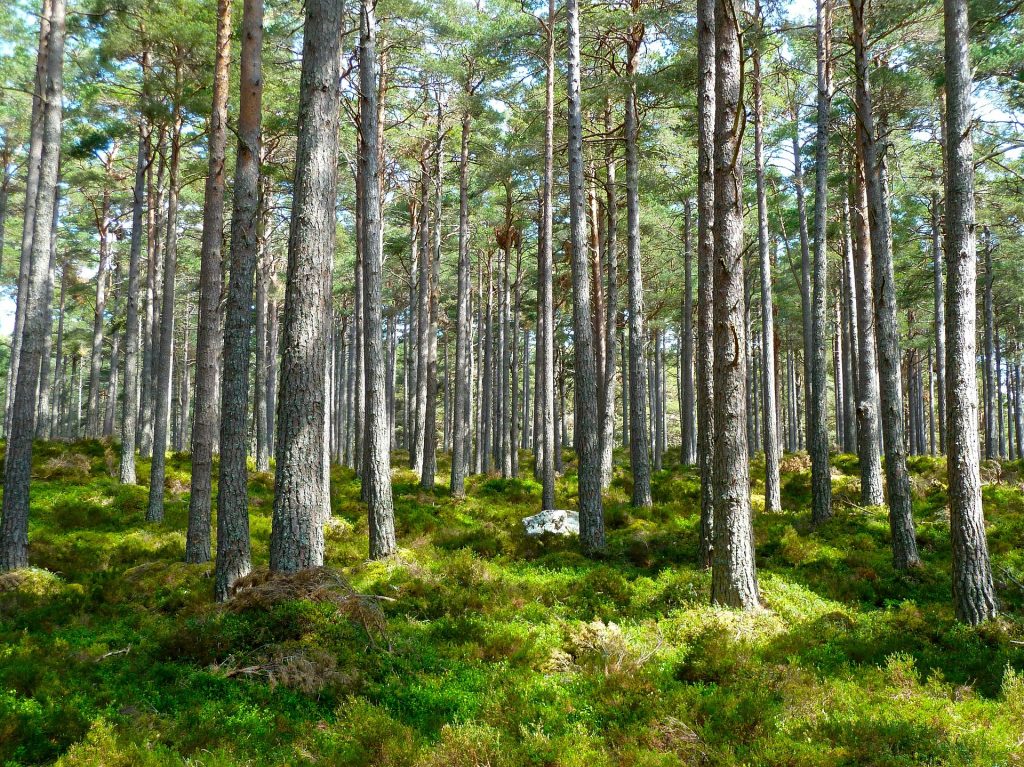
– Since we are already familiar with the basics, we are going to dive right into the material today. The more and more we go through this stuff, the more the schedule should become a routine. It is essential that you stay on top of this study plan and if you start having trouble finding the desire to continue, get a friend in on the action. You can both keep each other in line and keep the study plan going.
– We are going to start today off with these videos: “Environmental Systems” and “Geology.”
– Keep on top of your flashcard terms and your note taking. It’s important that you not only think about the definitions, but also the meanings behind the concepts we are running across. AP® Environmental Science is a little unique from the other APs since you will need to memorize, analyze, create data sets, etc., so pay attention to all of it.
– Make sure that you have these concepts, in particular:
– Environment
– Ecology
– Organisms
– Ecosystems
– Sustainability
– Natural Capital
– Natural Resources
– Let get into your first real set of practice questions. Go ahead and start answering the first set of questions in the Population section (19 questions in all). Take your time with these and it’s ok to peek at your notes.
– We’ve only just begun, so it’s ok if you get a few of these wrong, just make sure you pay attention to Albert.io’s comments and take notes on where you think you need to improve.
– Great job thus far. Hopefully, you’re getting into the swing of things!
Day 4
– Now we are going to want to click on and watch the “Geology” video. Remember to watch these alongside a solid textbook (or two, if you are brave enough). The more the better should be your mantra.
– Keep on top of your flashcard terms and your note taking.
– Now’s that time again—let’s do some practice questions. Go ahead and finish off the rest of the questions from the Population topic. Again, notes are all right but don’t rely on them.
– Now, take a look at one of the example Free Response Questions from any of the previous exams from the College Board’s database. You don’t need to answer these, just look through a couple and get a feel for what it is they are expecting from you.
Day 5
– Today you’re going to want to take a look at Video #4 from the Bozeman Science Playlist. When you have finished watching this, make a list of the ways that you believe humans have had an impact on the atmosphere. Add real-life examples whenever you can.
– It’s time to work on your flashcard terms. Make sure that you have these terms filled out:
– Biotic
– Abiotic
– Sustainability
– Environmental Indicators
– Speciation
– Development
– If you can, try to get a family member or a friend in on this action. Have them quiz you on all of the flashcard terms that you have come up with thus far. Most importantly, don’t just define the concepts; provide examples of how they work in our world today. Ask them if your explanations were clear. Also, have them ask you questions of their own. This will help you understand the concepts in your own way.
– Let’s get back to some practice questions. By now, you should be realizing the best practice is to take example questions. With that in mind, go ahead and work on the Earth Science Concepts and The Atmosphere
– Get a good night’s sleep, we’re almost through week 1!
Day 6
– Read through pages 7-15 of the CollegeBoard’s AP® Environmental Science Course and Exam Description. Make sure that you’re taking notes on what you need to study further in your notepad.
– Let’s go ahead and watch Video #5 from the Bozeman Science Playlist.
– Remember, your flashcards are your best friend. Keep working on them and they won’t let you down.
– Let’s go ahead and finish up the Earth Systems and Resources Since this is the end of the first week, you shouldn’t really be relying on notes anymore. You need to start treating these practice tests more like the real deal from this point forward.
– Now is the time to tackle an FRQ. Go ahead and select the one from the year 2002. Answer these to the best of your ability. It’s ok to struggle at first and to look up some answers. Don’t worry, the more we work on these, the better you will get at them.
– Before we end this week, take a look at the checklist that Albert.io has provided. You can view it here. Look through the Population and Earth System and Resources sections and check off what you can, while being honest. Take notes on where you are struggling.
Day 7
– Take it easy, catch up on your rest and we’ll begin again tomorrow.
– If you absolutely must do something today, review the videos we have matched thus far and glance through your flashcards.
Start your AP® Environmental Science Prep today

Day 8
– We are going to start off today by going back to the core concepts that the College Board wants you to get a good hold on. Remember these?
– Science is a process.
– Energy conversions underlie all ecological processes.
– The Earth itself is one interconnected system.
– Humans alter natural systems.
– Environmental problems have a cultural and social context.
– Human survival depends on developing practices that will achieve sustainable systems.
– Now, go back over your responses and add at least one new paragraph to each of these central themes. Use the information that we learned throughout last week and provide real, concrete examples to all of the ideas and theories you are mentioning.
– Let’s get back to another video. Take a look at the Water Resources and Soil Dynamics Make sure that you are adding to your ever-growing flashcard collection.
– Review all of your flashcards up to this point. Give yourself a little test by randomly selecting 30 cards and see if you can get all of the definitions correct.
– Go ahead and work on the first 46 questions from the Living World. Have you noticed yourself struggling with certain topics or ideas? If so, go ahead and review these topics in your notes and watch one of the videos again if you need to.
– Take a look at the FRQ from the year 2003 and answer it to your best ability. Try and note the kinds of questions that are being asked, so you can focus your studying on this later.
Day 9
– Go to the Bozeman Science playlist and watch video number 7. Make sure that you are adding at least 15 new flashcards to your growing pile as you are watching these videos.
– On the topic of flashcards, you should have these terms down (Note: these are just terms that you absolutely must know, but don’t limit yourself to just what we recommend):
– Salination
– Phytoremediation
– Upwelling Relative Dating
– Precambrian
– Paleozoic
– Tertiary Consumer
– Thermocline
– Commensalism
– Let’s go ahead and complete the next set of questions from the Living World section (31 Questions in all) Keep paying special attention to Albert.io’s recommendations and helpful hints. These are going to be the keys to growing as a learner and figuring out how to improve in time for your exam.
– Now go ahead and get to work on the FRQs from year 2004. You are going to want to start having someone read your work from this point on. Get a friend or parent to look over your responses and ask them for honest feedback. Ask them if the information is not only correct, but if the essay structure is smooth and flows logically.
Day 10
– OK, video time. Take a look at the Bozeman Science playlist and watch video number 8.
– As you watch these videos and read along in your textbook, you need to start making connections between real-life experiences and the theories you are learning. A good practice would be to think of three real-life examples for each flashcard term you write down.
– With this in mind, let’s do a little flashcard quiz. Randomly select 30 flashcards and quiz yourself. Keep in mind that you are also thinking about three examples for each term.
– Now go ahead and complete the Natural Ecosystem Change multiple choice questions. This will be an excellent time to start timing yourself. If you do not have a timer or stopwatch app on your phone/computer, you can access one here: online-stopwach.com. Try to treat this like a real exam, paying close attention to the time you have used up and how much time you have remaining.
– Let’s finish off the day with FRQs from the year 2005.
Day 11

– If you can get a family member or a friend in on your studying, you should ask them to help you for the beginning of your study session today. If you can, explain to them everything you have covered up to this point. Try to treat this as if you were the teacher giving a class to a new student. Encourage them to ask questions ad try your best to answer them.
– After you’ve done this, watch the next two videos from the Bozeman Science
– Keep on top of your flashcard terms and your note taking. Keep in mind that you need to be adding concepts from the readings and the videos we are watching. You should have these in your growing list by now, as well:
– Organic Compounds
– Tragedy of the Commons
– Triple Bottom Line
– Holistic
– Closed System
– Overshoot
– Environmental Justice
– It’s time to finish up with the Living World set of practice questions. Complete any that remains. Make sure you are reading through Albert.io’s suggestions and taking notes on where you are struggling, so we can strengthen your weaknesses later.
– Go ahead and complete the FRQs from year 2006. Read through your answers this time and check for any spelling or grammatical errors. From now on, you need to make sure you are writing properly—you don’t want to be dinged for sloppy wording.
Day 12
– Take a thorough look at pages 16-22 of the College Board’s AP® Environmental Science Course and Exam Description.
– At this point, you’ve heard and read from several sources covering the topic of Environmental Science. Which do you prefer? Are the videos working best or your textbook? Think about this for a moment and whichever you think is working best, you should focus your study time using that source.
– After you’ve done this, let’s go ahead and jump back into the videos. Go to the playlist and watch Videos #10 and #11.
– Now, go through and do another flashcard quiz with yourself (or a friend, if you can). Spend a solid thirty minutes going through your cards at random. Make small marks on those that you’re having a hard time with. This may help to spark a reminder to remember the term for later.
– Go ahead and work through the first set of questions from the Land and Water Use Keep your eye on the time.
– Instead of working on a new FRQ, go back and read through those you have already worked on. Read them as if you were grading a real AP® exam. What grade would you give yourself? What advice would you give the person writing the paper?
Day 13
– Let’s get right into watching a video for today’s study session. Watch and take notes on Videos #12 and #13.
– Make sure you have these terms in your flashcard pile:
– Intrinsic Value
– Inbreeding Depression
– Genetic Diversity
– Ecotourism
– Instrumental Value
– Biological Wealth
– Invasive Species
– After you’ve added these, complete the “Other Land Use” and “Mining” sets of questions from the Land and Water Use
– Let’s get back to working on the FRQs again. Select and work on those from the year 2007. Have someone read your essays and ask them for comments on whether or not you answered the question, if the grammar is correct, and if the ideas are flowing well.
Day 14
– Get a good night’s sleep; we begin a new day of this study guide tomorrow.
Start your AP® Environmental Science Prep today

Day 15
– We are right in the middle of our 30-day study guide. So, let’s use today as a day for review.
– The first thing you are going to want to do is quickly glance through all of the videos we’ve watched and review any textbook material you covered as well. Don’t read them fully—just a quick glance.
– After this, go back to those central themes laid out by the College Board. Again, you are going to want to add another paragraph for each of the topics. You should be looking back over your notes, allowing you to add everything you learned from the last two weeks. Make sure that you are real places and events to these lists.
– After you’ve done all of this, go through and quiz yourself once more on all of your flashcards. This should take a while since you’ve probably got a big fat stack at this point. Keep going until you have covered every term.
– Now, go through all of your multiple choice questions that you’ve answered thus far. Catch up on any questions that you may not have finished yet. Once you are all caught up. Work on all of those questions that you may have gotten wrong. Keep in mind all of the notes that you have taken on how to improve. Keep doing this until you are at 100 percent correct.
– Now let’s move onto the FRQs. Read through all of the answers that you have provided. Take a big marker/pen and circle repeating problems. For example, if you are struggling with the graphs or data sets, mark these, so you can go back over them again during our review sessions.
– The last thing that you should do today is take a look at our checklist. If you are not able to check off a certain section, go back and review your notes and watch the videos related to the topic. You should be feeling pretty confident at this point, so make sure that you are all caught up before we move forward tomorrow.
– Enjoy the rest of your day because we are doing to do some practice exam work for the next two days. Now, go get some rest!
Day 16

– OK, so for the next two days, we are going to do a couple of practice exams and try to recreate the exam itself as best we can. Make sure that you are in a quiet space, where you can focus for the next two or three hours and nobody will disturb you.
– Have your stopwatch or clock ready, so you make sure that you are staying in line with the time limits required by the CollegeBoard. For today and tomorrow, absolutely no notes. Also, have some water or maybe even a small snack, that way you won’t have to get up and break your concentration.
– Reminder, you have 90 minutes to complete the multiple choice section and 90 minutes to complete the FRQs section.
– And now we begin with the multiple choice questions. Go to our AP® Environmental Science page and select ten questions from each of the seven sections that on the page. Select these at random. Complete them within the required time limit.
– Once you have done that, it’s time to move on to the FRQs. Complete the first two sets of FRQs from Albert.io, the ones called “Elephant Poaching” and “Deep water Horizon Oil Spill.”
– Whew! Take a breath. Good job on completing your first real practice exam. Before we the rest of the day off and relax, read through all of the answers and recommendations that these sites are offering you.
Day 17
– All right, ready for day two of practice exams. Make sure your learning area is free of distractions and you are ready to go.
– So, we are going to do almost the exact same thing as yesterday. Select 10 multiple-choice questions from each section and complete them as if they are the real deal.
– Once you are done with that, go ahead and try to answer the remaining FRQs from Albert.io.
– When you’ve finished with all of this, go ahead and take the rest of the day off.
Day 18
– Hopefully, you got a lot out of those two practice exam days, and are becoming a little bit more comfortable with how they are set up. Now, let’s review everything you covered.
– Spend a minimum of thirty minutes (more if you have time) reading over every answer and response. Compare them to the correct answers. While you’re doing this, take detailed notes of the things that you see yourself struggling with. The more effort you put into this, the better your reviews will be in the future.
– Now, back to our videos. Watch and take notes on Videos #14 and #15.
– Review your flashcards once more. Make sure you have these terms/concepts:
– Umbrella Species
– Keystone Species
– Resource Partitioning
– Floodplain
– Drift Net Fishing
– Trickle Irrigation
– Xeriscape
– After you’ve added these, complete the questions in the Fishing and Global Economics
– Now, go ahead and work on the FRQ from the year 2008.
Day 19
– Glance over your notebook, dedicating at least twenty minutes to the areas that you are having the most trouble.
– After you’ve done this, watch and take notes on Videos #16 and #17.
– Flashcard terms:
– In Situ
– Lacey Act
– Species Diversity
– Remediation
– Nitrification
– Niche
– Ecotone
– Let’s get back to working on the on some more example multiple choice questions. Work on the first two sections under the Energy Resources and Consumption. Make sure that you are still taking notes on where you are struggling.
– Select and work on those from the year 2008. At this point, you are going to want to have one of your teachers take a look at your FRQs. Ask them nicely for whatever comments they can provide.
Day 20
– Before we get fully into our normal routine, go ahead and quiz yourself on your ever-expanding flashcard pile. Go through all of them, marking those you are struggling with. You should have a nice fat stack, so this should take at least thirty minutes.
– Video time again! Take a look at Videos #18 and #1 After you’ve watched these, take out your notebook and make a list that covers the ten most important bits of information from each video. If you have to go back and rewatch one, that’s ok. Making lists like these are going to help you retain the information shown, so you may want to do this with every video you watch.
– One you’re done with your lists, go ahead and work through the questions under the Nuclear Energy
– As per usual, let’s end with an FRQ. Finish those from the year 2009.
Day 21
– The end of another week!
– Get a good night’s sleep; we begin anew tomorrow.
Start your AP® Environmental Science Prep today

Day 22
– Before we begin with any new information for the week, go back to your checklist. If you are still struggling with any topics, now is the time to go back and review any material that you are still hung up on. Spend at least thirty minutes reviewing.
– When you are finished with your review, go back to the themes of Environmental Science and add a brand new paragraph to each topic, like we’ve done before. Here’s the list, in case you forgot:
– Science is a process.
– Energy conversions underlie all ecological processes.
– The Earth itself is one interconnected system.
– Humans alter natural systems.
– Environmental problems have a cultural and social context.
– Human survival depends on developing practices that will achieve sustainable systems.
– After you’ve worked on this, let’s get back to our videos. We are going to watch 4 videos today, 20 through 24. When you’ve finished with these, go to your notebook and write down how the concepts and themes that were covered relate to one another. What are the central ideas that connect these topics? Why do they matter?
– Time for another round of multiple-choice questions. Complete the Hydroelectric Power set of questions.
– Work on the FRQs from the year 2003. Keep having others read and critique your work. The more eyes, the better.
Day 23
– It’s time to finish off the College Board’s AP® Environmental Science Course and Exam Description. When you’ve finished reading this, you should have a pretty good idea of the entire structure of the AP® Environmental Science course. As a thought experiment, ask yourself: what would you change about this course? What kinds of info would you add to make it stronger?
– Let’s get back to our YouTube video selection and watch another 4 videos. These are going to be numbers 25 through 29. Just like yesterday, you should spend a few minutes writing out the central themes and ideas that connect each of the topics that are covered in these videos.
– When you have completed these, give your fat flashcard stack a looking through. Make sure that you’ve taken notes on these concepts:
– Crude Death Rate
– Graying
– Generation Time
– Igneous Rock
– Sedimentary Rock
– Metamorphic Rock
– Asthenosphere
– Once you’ve done this for about 45 minutes, you can complete remaining Energy Resources and Consumption questions you have left.
– Work on the FRQs from the year 2010. Are you noticing any patterns on how many of these FRQs are being phrased, or the types of questions they are asking? If so, write these patterns down and remember to study them when you review.
Day 24

– Before we start working on any new ideas, take out your notebook and work on this thought exercise: Explain what Environmental Science is in less four sentences or less.
– Let’s go ahead and slow down on the videos here. We are only watching one today (don’t worry, you’ll still have plenty to do). Watch the one titled Water Pollution.
– Go ahead and get started on the first set of question from the Pollution section from Albert.io.
– So, today we are going to work on the FRQs from the years 2011 and 2012. But before you get started on these, you may find it useful to outline your thoughts before you delve into the writing. Try this for these sets of questions. If you find that it help s you organize your thoughts, keep doing this for the rest of this study guide and for your exam.
Day 25
– Before we begin with any new material, read through all of your notes. What have you been struggling with the most? Pinpoint your weakest spots and go over them once more.
– Watch videos 31 and 32.Don’t stop connecting these to the rest of your notes. I know we are almost done, but don’t slack now.
– Do one last flashcard quiz.
– After you feel good about all of the terms, go ahead and finish off the remaining Pollution
– Now work on the FRQs from 2013.
– Make sure that you are all caught up on your FRQs and example questions. Now is the time to complete everything you have missed. Also, make sure that you are caught up on all of your reading, online videos, and flashcards.
– Now is also the time to retake all of the example questions that you may have gotten wrong over the last several weeks. Keep taking them until you get the right answer, reading through Albert.io’s recommendations after each attempt. Do this again with each of the FRQs.
Day 26
– Today will be the last day we are going to add one last set of paragraphs to the central themes information we’ve been working on since the first week of this study guide. Read through everything you have written and work through any learning knots you might still be stuck on.
– Today is going to be a day of “finishing things off,” so let’s start by finishing off the Bozeman Science videos we’ve been watching all month long.
– Do the same for the remaining multiple choice example questions for the AP® Environmental Science
– Finally, let’s finish off with the FRQ from 2014 from the CollegeBoard website. Now that you are almost done with these, have you noticed a pattern in the types of question they are asking? Try to think about how the questions are being asked and the topics that are being covered. What kinds of questions do you think will be on your exam?
Day 27
– Today is going to be your final day of review. You should be feeling very confident about your future exam. Now’s the time to work out the final kinks and get you read for the exam itself.
– If you can get a friend or family member to help you out today, that would be fantastic. If not, just make sure you don’t burn out—you’ve come so close!
– First off, take a look over all of your notes, including all of the outlines you have created, the FRQ answers you have come up with, and all of the responses to the questions that have been posed over the last several weeks. Read your notes thoroughly and double-check your familiarity with all of the concepts and ideas.
– Next, you are going to want to review all of your flashcards and notes. Polish up those final weak spots you see and be proud that you’re getting better at the terms. It may seem repetitive to do this now, but one last time can’t hurt, right?
– Review all of your example question scores from the AP® Environmental Science site by Albert.io. If you still have some questions that were answered incorrectly, go back and retake these until you have reached 100 percent correct. Take a look at Albert.io’s notes and recommendation for how to improve and better understand the concepts you might be missing.
– Review all of the FRQ you have answered. Ask yourself: Which ones were the strongest? Weakest? Can you see yourself getting progressively better? Take notes in your notebook on where you need to do better. Be as specific as possible.
– The last thing that you will want to do today is to do a final checklist look through. Spend as much time as you need reviewing all of our material until you can be 100 percent confident in your ability to check these off.
Day 28
– This is our last rest day, so use it wisely. Make sure you get your rest today.
– The rest of this 30-day study guide will consist mostly of review, so stay on top of your rest and healthy eating. Don’t lack off now!
Start your AP® Environmental Science Prep today

Day 29
– All right, today is going to consist of one last practice exam and one last review. Go ahead and get all your stuff ready for another practice exam.
– So, we are going to do something a little different from last time. Select 60 multiple-choice questions from the topics that you are struggling with the most. So look over your notes and answer those questions that you have struggled with the most.
– Once you are done with that, go ahead and try to answer the very last FRQ we have left from the year 2015 from the College Board Website. By the way, awesome job for finishing all of these off!
– When you’ve finished with all of this, do a once over of all of the material. Skim the readings and the videos, slowing down on those topics you may still be struggling with. Do the same with your flashcards, FRQ answers, etc.
Day 30
– You did it! You made it to the last day. A big KUDOS to you.
– Today is a day that you relax and get everything prepared for the exam. Don’t bother reviewing very much. If you stuck with this study guide, then you will have retained the info for the long term. You’re a pro now!
– Today, you’re really going to want to focus on being prepared for the exam itself. Get your stuff ready. Water? Check. Pen/Pencil? Check. Get everything in order.
– Again, stay healthy! Drink plenty of water to stay hydrated and eat healthy foods, so your body is thinking only about the upcoming exam. And especially get a good night’s sleep. This is probably the most important thing you can do.
– You’ve worked really hard to get to this point, so congratulations on staying on top of this 30-day study plan—you’ll do great!
– If you have kept up with this daily study guide, you will have:
– Notes, key terms, and flashcards (which you are probably very tired of seeing your fat stack of Environmental Science flashcards) on every section of the course.
– A deep and thorough understanding of how the models and ideas of the Environmental Sciences work both in theory and the world we live in today.
– Observed dozens of visual examples of cultural, physical, economic, and political variations of environmental science through expansive informational videos and real-life scenarios raised by the texts.
– Completed a broad range of example Free Response Questions and practiced with over a thousand multiple choice questions!
For however much time you still have after completing this AP® study, make sure to periodically review your notes, key terms, flashcards, and timeline. In particular, you are going to want to go over all of the material provided by Albert.io. If there are any themes or questions that you cannot check off confidently, make sure that you review the notes and flashcards you have taken for that particular section of the course.
Staying healthy and getting enough rest is the most important thing you can do at this point. You’ve worked so hard over the last month; don’t cancel it out now by staying up too late or eating terrible food that makes you feel non-alert and slow. On the night before the exam itself, eat a healthy dinner and get plenty of sleep. On the day of the exam make sure you have a good breakfast and that you bring snacks for the test itself.
Finally, maintain that feeling of confidence. The fact that you completed this comprehensive 30-day study guide shows your dedication and drive. Keep up with the hard work and good luck!
For information on other AP® exams and the other study guides we offer, head to Albert.io or read more on our blog.
Let us know what has worked for you. What did you like best about this 30-day study guide? What have you done that has really helped you study for the AP® Environmental Science Exam?
Let us know what has worked for you. What did you like best about this one month study guide? Do you have recommendations of your own on how to study for the AP® Environmental Science exam?
Start your AP® Environmental Science Prep today
Looking for AP® Environmental Science practice?
Kickstart your AP® Environmental Science prep with Albert. Start your AP® exam prep today.

